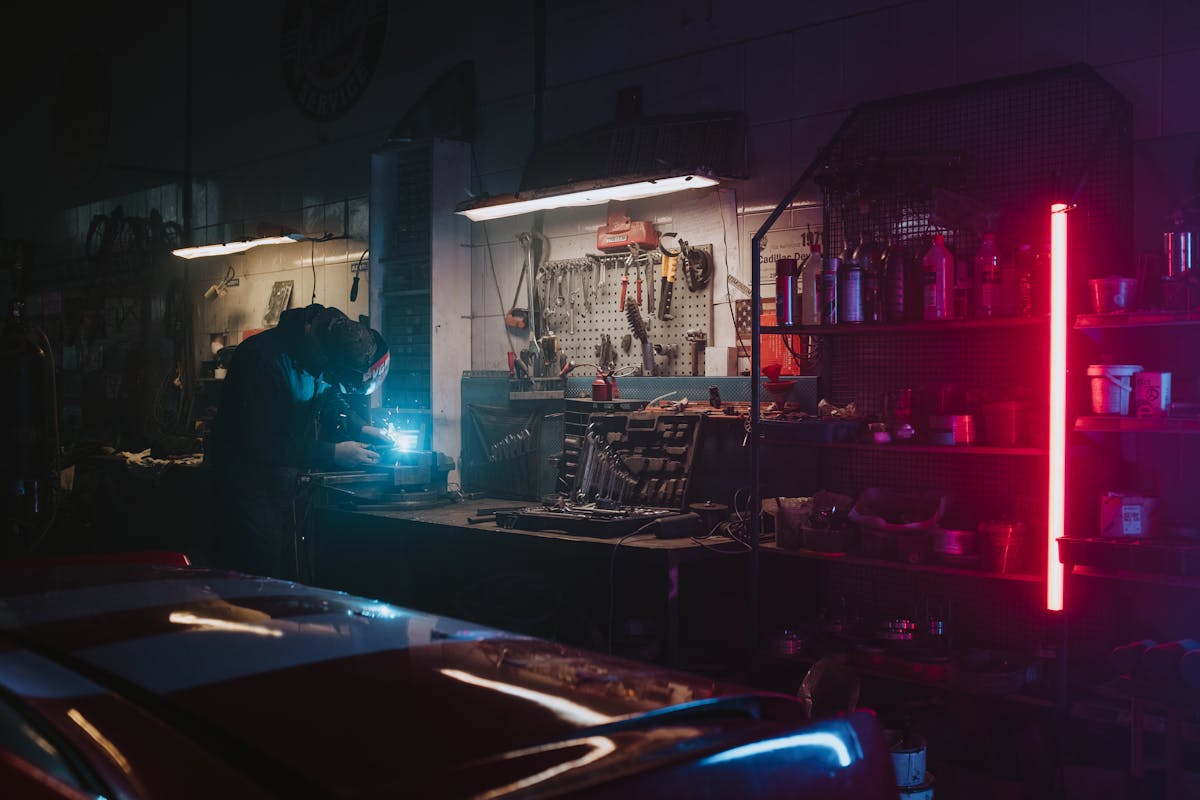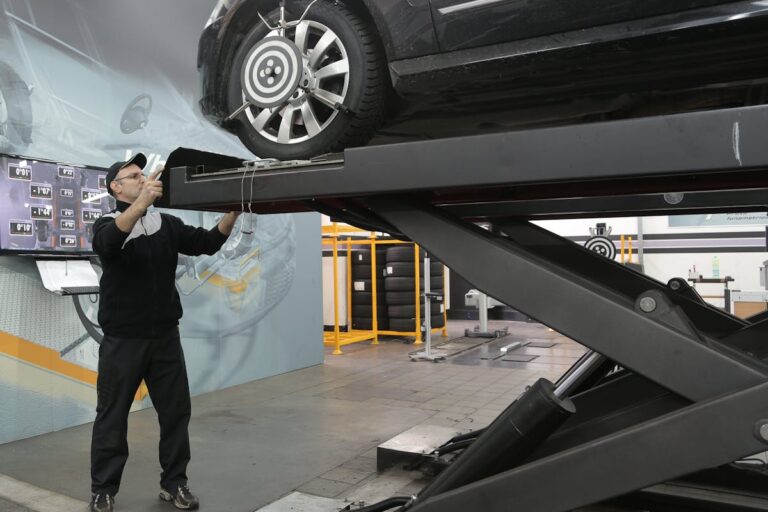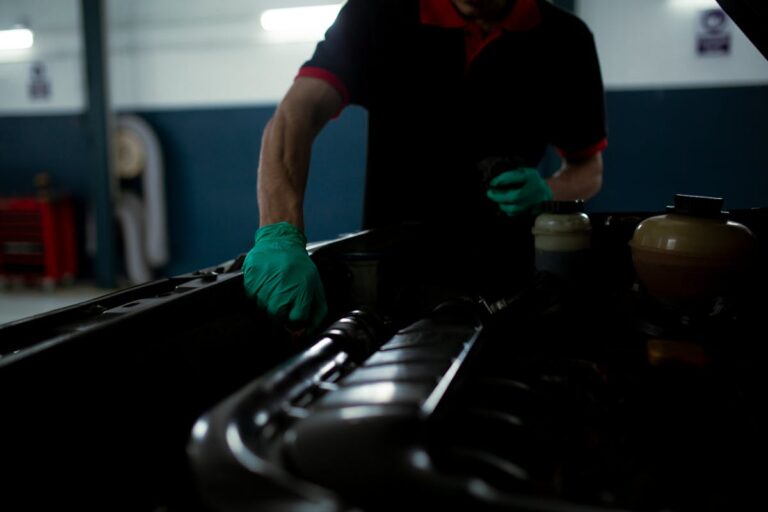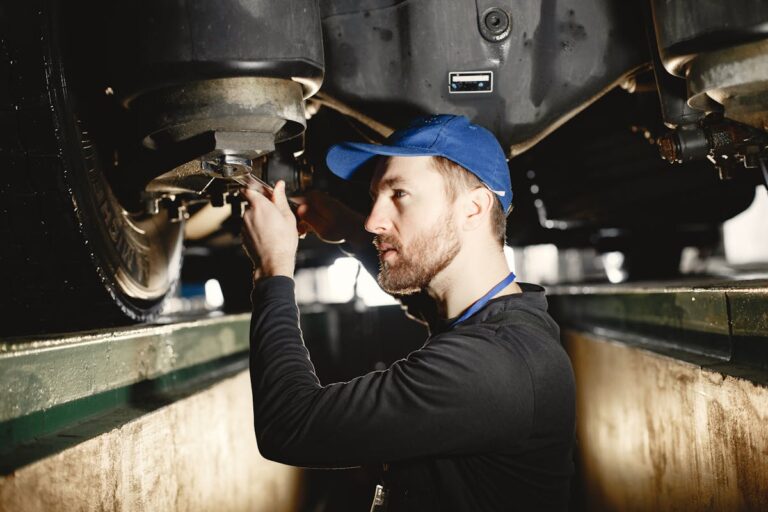Steering through the auto repair process after an accident can often seem like an intimidating task, especially when trying to estimate how long common accident repairs might take. The duration of these repairs can greatly depend on factors such as the extent of the damage, availability of parts, and the expertise of the technicians involved. But what if we could predict, with a reasonable degree of accuracy, the likely timeframes for common repairs? Feel free to share your thoughts or experiences as we explore this topic further.
Understanding Car Accident Damages
When evaluating the aftermath of a vehicular accident, it is essential to fully comprehend the extent and nature of car accident damages. The range of damages can vary considerably, largely contingent on car accident types. From minor fender-benders to head-on collisions, the damage inflicted can span from superficial dents to extensive structural deformities.
In addition to car accident types, repair cost is another critical component of understanding car accident damages. The cost is primarily dictated by the severity of the damage. Minor cosmetic damages like scratches or small dents may incur costs in the hundreds, while major structural damages can escalate to thousands.
The repair cost also includes the labour hours required to restore the vehicle to its pre-accident condition. This could involve tasks as simple as paint touch-ups or as complex as frame realignment. Moreover, the cost of replacement parts is a substantial factor in the total repair cost. High-end models typically have more expensive parts, which can greatly impact the overall cost.
Timeline for Minor Dent Repairs
Repairing minor car dents is a relatively swift process that showcases the proficiency and skill of automotive technicians. This type of minor bodywork often involves a series of dent repair techniques, each tailored to the severity and location of the dent.
The first step in the process is usually an assessment of the damage. This step is essential as it allows technicians to devise an effective repair plan. The assessment typically takes about an hour, depending on the number and complexity of the dents.
Next, technicians employ a range of dent repair techniques. For shallow dents, paintless dent removal (PDR) techniques might be used. This method involves using specialized tools to massage the dented panel back into its original shape, all without disturbing the vehicle’s paint. PDR can take anywhere from a few hours to a full day, depending on the number of dents and their sizes.
For deeper dents that have damaged the paint, traditional bodywork methods are applied. This process includes filling the dent, sanding the area smooth, and repainting. This procedure takes, on average, two to three days to complete, considering drying times.
Duration for Major Bodywork
Beyond minor dents and scratches, considerable auto body damage necessitates a considerably more intricate and time-consuming repair process. Major bodywork, such as frame replacement and paint refinishing, is a complex task that requires a high level of technical expertise and precision.
The duration for such repairs can vary considerably based on several factors:
- Severity of Damage: More severe damage, especially when it involves critical components like the frame, requires a longer repair time. Frame replacement is a meticulous process that can take several weeks to complete.
- Paint Refinishing: This process involves removing the old paint, preparing the surface, applying the new paint, and then finishing it off with a clear coat. Depending on the size of the area to be painted, this could take anywhere from a few days to a week.
- Availability of Parts: If the required parts are not readily available, this can extend the repair timeline considerably.
- Workload at the Repair Shop: The time it takes for major bodywork also depends on how busy the repair shop is. A high-volume shop might need more time to complete the job.
Ultimately, while it’s difficult to provide an exact timeframe, major bodywork generally takes a few weeks to complete.

Estimating Windshield Replacement Time
Shattering the myth of lengthy repair times, windshield replacement is a comparatively swift process in the domain of auto repair. The duration largely depends on factors such as the complexity of the windshield installation, the availability of the right windshield, and the setting time of the adhesive used.
Typically, the process of windshield installation takes about an hour. This includes the time taken to remove the old windshield, prepare the frame, install a new windshield, and apply the adhesive. However, the adhesive needs time to cure to guarantee a secure and proper seal. Depending on the type of adhesive and the prevailing weather conditions, this can add an additional one to two hours to the overall process.
The glass quality also plays a pivotal role in the time estimate. High-quality glass often fits better, reducing installation time, whereas lower quality or incorrectly ordered windshields may necessitate additional adjustments, thereby increasing the total time.
Engine Damage Repair Expectations
Diving into the domain of engine damage repairs, expectations are largely dictated by the extent of the damage, the make and model of the vehicle, and the resources available at the repair shop. Engine repair costs can vary greatly, and thorough diagnosis is essential before arriving at a final cost estimate.
Engine damage is often accompanied by engine performance issues, which can range from reduced fuel efficiency to the vehicle failing to start. The key factors that affect the repair timeline and costs include:
- Extent of Damage: Minor issues like spark plug replacement can be resolved quickly. Major damage such as a cracked engine block involves more time and cost.
- Vehicle Make and Model: Luxury and high-performance vehicles often have complex engines that require specialized tools and skills, leading to higher costs and longer repair times.
- Repair Shop Resources: The availability of parts, specialized tools, and skilled technicians can greatly influence repair times.
- Prior Damage: Pre-existing wear and tear can complicate repairs and extend timelines.
Understanding these factors can help set realistic expectations about engine damage repairs and their associated timeframes.
Timeframe for Suspension and Alignment Fixes
The process and duration of repair for suspension and alignment issues, resulting from an accident, can be complex and varied. We must consider the extent of the damage, the type of vehicle, and the availability of parts, all of which contribute to the overall timeframe. A thorough understanding of these factors will provide a more accurate estimate and set realistic expectations for the completion of the repair work.
Understanding Suspension Repair
Suspension repair, a critical aspect of accident repairs, involves intricate processes that demand meticulous attention and expertise. This process caters to the intricate suspension components that absorb shocks and maintain contact between the tires and the road.
If you’re wondering about the time it takes to repair suspension, consider these aspects:
- Inspection: The mechanic first examines the suspension components for damage. This could take between 1 to 2 hours depending on the extent of the damage.
- Disassembly: Based on the inspection, damaged components are removed. This could take a few hours to a whole day, depending on the number of components requiring replacement.
- Repair: The repair techniques vary as per the type of damage. It can take a few hours for minor repairs to several days for major ones.
- Reassembly and Testing: Once repaired, the components are reassembled and the vehicle is tested for performance. This usually takes a few hours.
Alignment Fix Duration
With respect to the duration needed for alignment fixes, it is crucial to acknowledge the interplay of various factors that influence the timeframe. This process, typically ranging from 1 to 2 hours, involves the use of specialized alignment tools to properly adjust the angles of the wheels to the manufacturer’s specifications.
As with any automotive repair, the duration for alignment fixes can be influenced by the severity of the alignment symptoms. In minor cases, where the symptoms include slight steering-wheel vibration or a vehicle that pulls to one side, the fix could be relatively quick, provided there is no additional damage to the suspension components. However, in more severe cases where there is noticeable tire wear or handling issues, the alignment process may require more time to guarantee the vehicle’s safety and ideal performance.
Moreover, the skill level and experience of the technician play a significant role in the duration of alignment fixes. An experienced technician, familiar with the use of alignment tools and able to accurately interpret alignment symptoms, is likely to complete the task more efficiently, potentially reducing the overall repair time. To summarize, while the specifics of each case may vary, a standard alignment fix can generally be completed within a few hours.
Factors Influencing Repair Time
Understanding the timeframe for suspension and alignment fixes necessitates a broader examination of the factors that influence repair time. A multitude of variables exist that can extend or shorten the duration of repair tasks. It is essential to evaluate these factors in order to generate an accurate estimate of the repair timeline.
- Repair Complexity: More complex repairs require a higher degree of expertise and precision, which can lengthen the repair duration. For instance, a suspension repair that involves replacing multiple components will take longer than a simple alignment adjustment.
- Parts Availability: If the necessary parts are not readily available, this can greatly extend the repair timeline. It is important to source parts from reliable vendors to avoid unnecessary delays.
- Workload: The number of vehicles needing service at the repair facility can impact the time required for your repair. A busy shop may require additional time to complete each task.
- Equipment and Tools Availability: Limited access to specialized tools or equipment can also influence repair time. For example, a repair shop may have a single alignment machine, which could potentially create a backlog of vehicles waiting for alignment fixes.
Thus, understanding these factors can help set realistic expectations for repair timelines.
Speed of Interior Repairs and Replacements
A notable proportion of accident repairs involve the vehicle’s interior, a fact often overlooked by many. These repairs, covering a wide scope from minor fixes to major overhauls, can greatly affect the overall repair timeline.
One common area of interior repair is the interior upholstery. Depending on the extent of the damage, upholstery repairs can be time-consuming, particularly when dealing with materials like leather or high-grade fabric. Small tears or burns can typically be patched within a day, but extensive reupholstering can take up to a week, given the intricacies involved in the process.
Dashboard replacement, on the other hand, is a more complex procedure. It requires technical expertise and precision, as the dashboard houses vital control systems and electronics. The process can take anywhere from a few days to a week, factoring in the time to order and receive the replacement parts.
Frequently Asked Questions
What Is the Average Cost of Common Accident Repairs?
The average cost of common accident repairs varies considerably, influenced by the extent of damage, vehicle make and model, and location. However, typical repair costs range from $500 to $1500, inclusive of labor and accident expenses.
Can I Drive My Car Before the Repairs Are Done?
Driving your car prior to completion of repairs can pose serious safety concerns. The decision should be based on the nature of damage and advice from a professional. Respect the repair timeline for your safety.
Are There Any DIY Methods for Minor Car Repairs?
Yes, there are several DIY methods for minor car repairs. Basic maintenance and quick fixes can be done at home with the right tools and knowledge, such as changing oil, replacing filters, and fixing minor dents.
Does Insurance Cover All Types of Accident Repair?
Insurance policies vary widely; not all cover every type of accident repair. All-encompassing plans often provide extensive repair coverage, while others may limit or exclude certain types. Always review your policy’s specifics thoroughly.
How Can I Find a Reliable Repair Shop Near Me?
Finding a reliable repair shop near you involves researching local options, considering their certifications, specialties, and prices. Importantly, scrutinize customer reviews to gauge their reputation for quality service and customer satisfaction.


